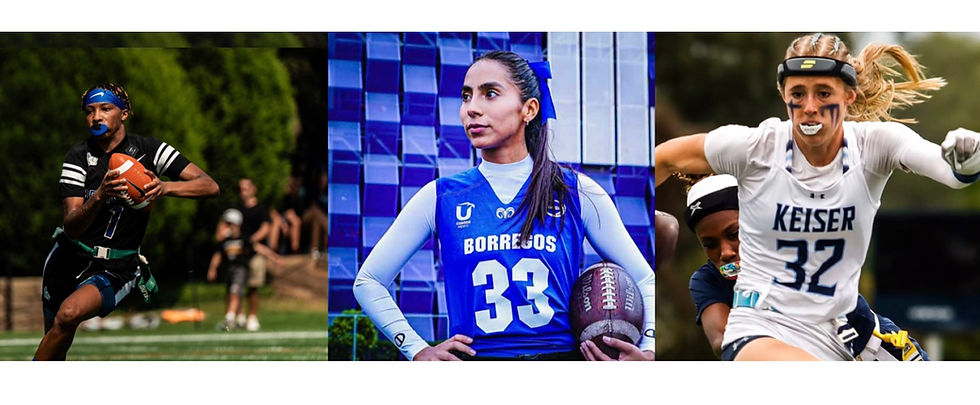NCAA Cleared in Gee Trial
- Landis Barber
- Nov 28, 2022
- 2 min read

On Tuesday, a jury returned a verdict in Gee v. NCAA, the first chronic traumatic encephalopathy (CTE) case against the NCAA to reach a jury, finding that the NCAA was not liable for Matthew Gee’s death. The NCAA will utilize the verdict to defend hundreds of pending CTE cases across the country.
Matthew Gee was a linebacker for the University of Southern California from 1988 to 1992, winning a Rose Bowl for the Trojans in 1990. When Gee graduated from USC, he attended training camp with the Los Angeles Raiders. The Raiders cut Gee from the team, and Gee left football to run an insurance company and ultimately married his college sweetheart, Alana.
According to the lawsuit, the Gees lived a normal life for 20 years. In 2013, Matt began to lose control of his emotions, drinking heavily and often unable to recall recent events—symptoms of CTE.
Matt died on New Year’s Eve in 2018. Per reports, the cause of death was a combination of the toxic effects of alcohol and cocaine, plus other conditions, including cardiovascular disease, cirrhosis, and obesity.
After Alana donated Matt’s brain to Boston University’s CTE center, the CTE center diagnosed Matt with CTE. Later, Alana sued the NCAA, claiming negligence in failing to protect Matt from head trauma that ultimately led to his death.
At trial, the NCAA leaned on the organization’s lack of knowledge surrounding CTE’s effects during Gee’s time at USC. It was not until 2005 that a sturdy revealed evidence of CTE in football players—far beyond Gee’s time at USC.
Further, Gee never reported a concussion during his time at USC, and even in his application to play for the Raiders, Gee reported that he had never been knocked unconscious.
Gee’s attorneys put on evidence that included a former teammate testifying that Gee took hits that left him confused and other evidence that the NCAA knew about the effects of head injuries prior to Gee’s time at USC but failed to implement rules to prevent the injuries.
In the end, Gee’s evidence could not convince the jury that the NCAA knew or should have known about the long-term effects of trauma to the head. The verdict could affect athletes’ head injury claims throughout the country. Gee’s case is unique in that it is the first case to reach a jury verdict. In 2014, Ploetz v. NCAA went to trial but settled just days into the trial for an undisclosed amount.
Importantly, Gee’s attorneys were not allowed to produce evidence at trial that Gee was one of five linebackers from USC’s 1989 football team to die before the age of 50—a fact that could have impacted the jury’s decision. While this may have been the first case to reach a jury, it likely will not be the last. For all future cases, focusing on the causation element will be critical.
Landis Barber is an attorney at Safran Law Offices in Raleigh, North Carolina. You can connect with him via LinkedIn or via his blog offthecourtdocket.com. He can be reached on Twitter @Landisbarber.







What an excellent fnf read! Your ability to communicate complex ideas with clarity and precision showcases your visionary approach to knowledge sharing.
EPS Machine EPS Cutting…
EPS Machine Eps Raw…
EPS Machine EPS Recycling…
EPS Machine EPS Mould;
EPS Machine EPS Block…
EPP Machine EPP Shape…
EPTU Machine ETPU Moulding…
EPS Machine Aging Silo…
EPTU Machine ETPU Moulding…
EPS Machine EPS and…
EPS Machine EPS and…
AEON MINING AEON MINING
AEON MINING AEON MINING
KSD Miner KSD Miner
KSD Miner KSD Miner
BCH Miner BCH Miner
BCH Miner BCH Miner
EPS Machine EPS Cutting…
EPS Machine Eps Raw…
EPS Machine EPS Recycling…
EPS Machine EPS Mould;
EPS Machine EPS Block…
EPP Machine EPP Shape…
EPTU Machine ETPU Moulding…
EPS Machine Aging Silo…
EPTU Machine ETPU Moulding…
EPS Machine EPS and…
EPS Machine EPS and…
AEON MINING AEON MINING
AEON MINING AEON MINING
KSD Miner KSD Miner
KSD Miner KSD Miner
BCH Miner BCH Miner
BCH Miner BCH Miner